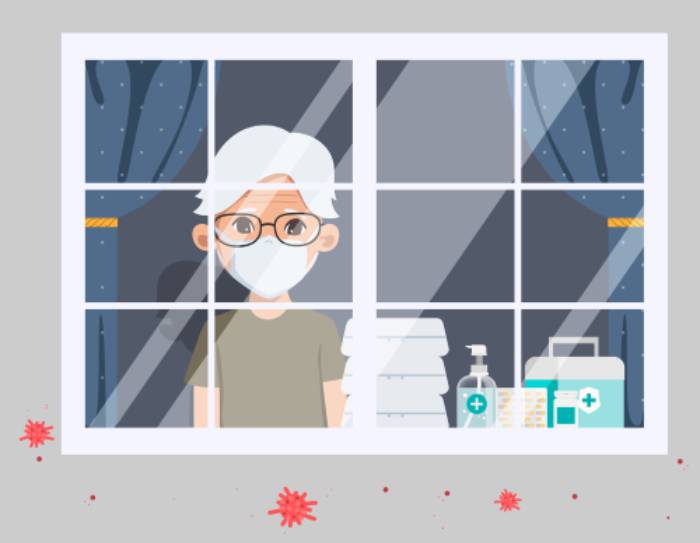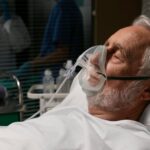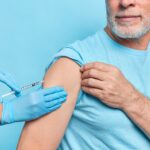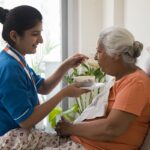It has been over 2 years since COVID-19 has impacted the world in a major way. As mentioned on World Health Organisation’s Coronavirus (COVID-19) Dashboard, there have been 373,229,380 confirmed cases of COVID-19, including 5,658,702 deaths, reported globally till now. As time is passing, more and more variants of this virus are emerging and as a result, the way to tackle the virus keeps changing. However, some basic protocols have to be maintained to manage the virus infection or if infected, how to manage it with home isolation.
It has been observed that the majority of the cases around the world have been mild and/or asymptomatic. It is very important to understand and differentiate between mild cases and more moderate or severe cases so that there is no unnecessary increase in the burden on the healthcare infrastructure. Hence, home isolation and management of cases at home form a very major way of treating these cases. Since the virus spreads very fast, it is also important to understand the protocol to be followed while managing a COVID-19 patient at home so that he not only recovers well but also does not spread the infection to other household members.
Asymptomatic or mild cases of COVID-19 are those who either have no symptoms or mild symptoms like cough, mild fever or have oxygen saturation above 93% at room air without support.
Table of Contents
Patients eligible for Home Isolation
- The patient should be clinically assigned as a mild/ asymptomatic case by the treating Medical Officer.
- There should be enough space in the house, preferably a separate room for the patient to stay separately.
- Contact with a doctor should be available or established so that the patient can remain in touch for any update in medical condition.
- If the patients are elderly, i.e., aged more than 60 years and have co-morbid conditions such as Hypertension, Diabetes, Heart disease, chronic lung/liver/ kidney disease, Cerebrovascular disease, etc., then home isolation will be allowed only after proper evaluation by the treating medical officer.
Instructions for the COVID-positive patients
- The patient should stay in the identified room and away from other people in the home, especially the elderly and those with co-morbid conditions like hypertension, cardiovascular disease, renal disease, etc. The patient should not come out for the entire period of isolation and not come in contact with any other member of the family.
- The patient should stay in a room which is well ventilated with access to open windows or have cross ventilation.
- The patient should at all times use a triple-layer medical mask. They should discard the mask after 8 hours of use or earlier if the mask becomes wet or is visibly soiled.
- The patient must take rest and drink a lot of fluids to maintain adequate hydration.
- The patient should do regular chest physiotherapy or lung exercises.
- Hand washing and sanitizing are very essential for the patient. Regular washing for 2 minutes with proper soap and water is very essential.
- The patients shall not share personal items including utensils with other people in the household.
- The patient should keep the surfaces of the doors, tables knobs, etc., clean to whatever possible extent with disinfectants.
- Regular monitoring of the oxygen saturation with a pulse oximeter is essential. All the readings should be noted for record purposes.
- Regular monitoring of the temperature should be done and the readings noted.
Appropriate Safety Measures
If the patient is accompanied by a caregiver, then appropriate measures have to be taken by the caregivers also which may include:
- Mask
The caregiver should wear a triple layer medical mask. N95 mask may be considered when in the same room with the ill person. The front portion of the mask should not be touched or handled during use.
If the mask gets wet or dirty with secretions, it must be changed immediately.
Perform hand hygiene after disposal of the mask. Also, he/she should avoid touching his own face, nose, or mouth. - Hand Hygiene
Hand hygiene must be ensured following contact with an ill person or his immediate environment. Use soap and water for handwashing for at least 40 seconds. Alcohol-based hand rub can be used if hands are not visibly soiled.
A very important aspect in the management of COVID-19 patients at home is Proper Waste Disposal.
Effective and safe disposal of general wastes such as disposable items used food packets, fruit peel offs, used water bottles, left-over food, disposable food plates, etc. should be ensured. They should be collected in bags securely tied for handing over to waste collectors.
Further, the used masks, gloves, and tissues or swabs contaminated with blood/body fluids of COVID-19 patients,., should be treated as biomedical waste and disposed of accordingly by collecting the same in a yellow bag and handed over to the waste collector separately so as to prevent further spread of infection within the household and the community.
Treatment for patients with mild /asymptomatic disease in Home Isolation
- The patient should be in regular touch with a doctor and follow the treatment diligently as per the instructions of the doctor.
- The patient must continue the medications for other co-morbidities/illnesses after consulting the treating doctor.
- Patients to follow symptomatic management for fever, running nose, and cough, as required or needed.
- Patients may perform warm water gargles or take steam inhalation thrice a day.
- If fever is not controlled with a maximum dose of Tab. Paracetamol 650 mg four times a day, consult the treating doctor.
- The patient should not indulge in self-medication or change of medication without the advice of the treating doctor.
Steroids are not indicated in mild disease and shall not be self-administered. Overuse & inappropriate use of steroids may lead to additional complications.
Don’t forget your diet
- A good nutritious diet preferably home-cooked with more proteins is recommended.
- Fresh fruits should be included in the diet.
- Excess of tea/coffee should be avoided as it causes dehydration.
- Adequate intake of water for proper hydration.
- Consult a nutritionist for a COVID-specific diet for better and fast recovery.
When to seek medical attention
The patient should be aware of the warning signs for seeking medical attention or going for hospitalization. Home isolation should be terminated and hospitalization should be considered if there is
- Unresolved High-grade fever (more than 100° F for more than 3 days),
- Difficulty in breathing,
- Dip in oxygen saturation (SpO2 ≤ 93% on room air at least 3 readings within 1 hour) or respiratory rate >24/ min,
- Persistent pain/pressure in the chest,
- Mental confusion or inability to arouse,
- Severe fatigue and myalgia.
If the above symptoms appear, then the patient should be hospitalized.
It is now recommended that home isolation may be discontinued once there are no symptoms for 3-4 days which usually happens around 7-10th day. A repeat test or RTPCR is not recommended.
Generally, it has been seen that by following the home isolation protocol, most of the patients progress well and recover soon.





